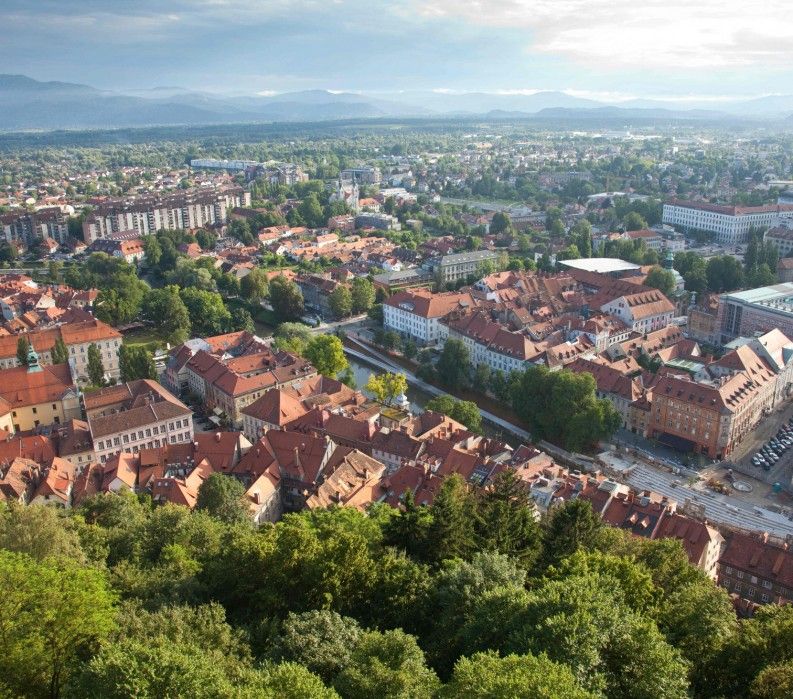

The city of Koper (just south of Trieste) is Slovenia’s major port.The General Terms and Conditions determine the conditions and manner of using the Slovenian Tourist Board’s Media Library services. The 29-mile (47-km) strip of coast makes up Slovenia’s riviera. It overlaps what were the Habsburg regions of Trieste and Gorizia and is made up of Slovenia’s portion of the Istrian Peninsula, the Adriatic hinterland, and the Soča and Vipava river valleys. The fourth principal region (occupying barely one-twelfth of Slovenia’s surface) is Primorska, or the Slovene Littoral. It was ruled by Hungary until 1918 its main town is Murska Sobota. Beyond a saddle of hills known as the Slovenske Gorice is Prekmurje, a wheat-growing region drained by the Mura River in the extreme northeast of the country.

Subpannonia corresponds in part to the lower part of the old Austrian duchy of Styria Slovenes call their portion Štajerska and share some traits with their Austrian neighbours. Its basins contain the cities of Maribor (on the Drava) and Celje (on the Savinja River, a tributary of the Sava). The next largest physiographic region (occupying one-fifth of the country) is the fertile Subpannonia it is located in eastern and northeastern Slovenia and includes the valleys of the Sava, Drava, and Mura rivers. Get a Britannica Premium subscription and gain access to exclusive content. Scientific study of karst terrain is a Slovene specialty, research having begun during the 18th century in Habsburg Carniola. Most of the region is known to Slovenes by its historical names: Dolenjska (Lower Carniola) and Notranjska (Inner Carniola). The Suha Krajina is a karstified plateau the Bela Krajina is a transitional belt that contains plains and points toward the Subpannonia (Pannonian Plain). Although it constitutes one-fourth of Slovenia’s area, the Kras region has only a fraction of the country’s population, which is concentrated between the wooded limestone ridges in dry and blind valleys, hollows, and poljes. Slovenia’s second major physiographic region, the Kras (Karst), a spur of the lengthy Dinaric Alps in the southwestern part of the country, is dotted with caves and underground rivers, the characteristic features of karst topography (whose term is derived from the name of the region). On Gorenjska’s southern edge is the spacious Ljubljana basin, which contains the capital as well as the industrial city of Kranj. Slovenes refer to the Mea and Mislinja river valleys as Koroška (Carinthia). The historical name for the central Alpine lands is Gorenjska (Upper Carniola), a name that Slovenes still use. The main subalpine range is the Pohorje, located south of the Drava River. Slightly lower than the High Alps is the subalpine “ridge-and-valley” terrain. In a vale beneath Triglav lie idyllic Lake Bohinj and Lake Bled. In the north and northwest, along the borders with Italy and Austria, are the High Alps, comprising the Kamnik and Savinja, the Karavanke ( Karawanken), and the Julian Alps the latter includes Slovenia’s highest peak, Mount Triglav, at 9,396 feet (2,864 metres). The first is the Alpine region, which takes up about two-fifths of Slovenia’s surface area. In Slovenia four main physiographic regions can be distinguished.

Saving Earth Britannica Presents Earth’s To-Do List for the 21st Century.Britannica Beyond We’ve created a new place where questions are at the center of learning.100 Women Britannica celebrates the centennial of the Nineteenth Amendment, highlighting suffragists and history-making politicians.
#Slavania austria how to


 0 kommentar(er)
0 kommentar(er)
